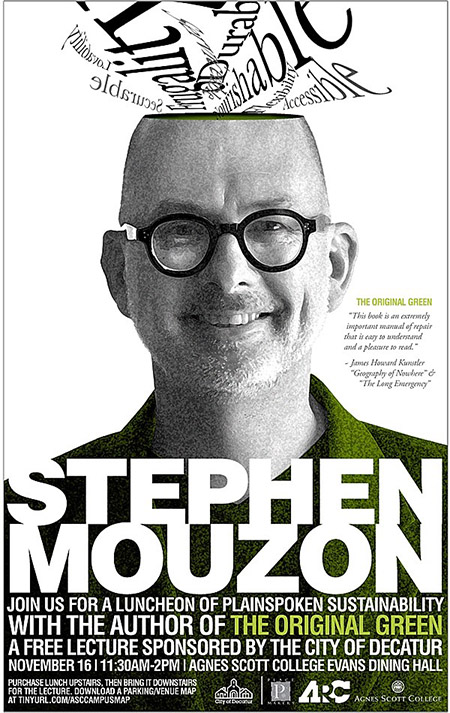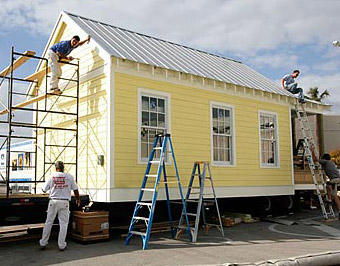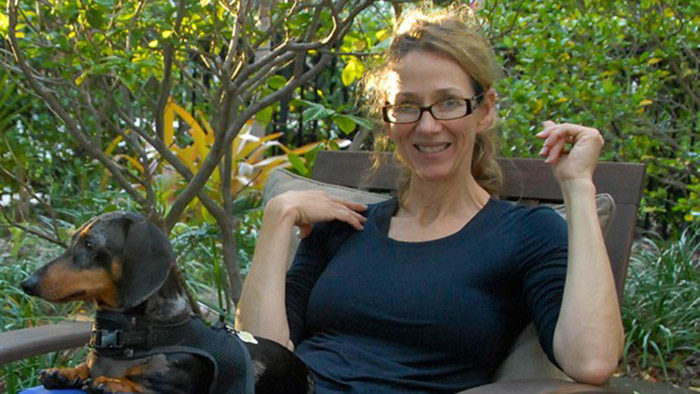Self-Taught MBA: Meetings with Remarkable Business Leaders
Steve Mouzon has done remarkably well following a business plan he unapologetically describes as, “I have always done the inadvisable thing.”
With this post, we continue with our series of success stories that don’t fit the traditional template. I have always admired the original thinking of architect, author, and homebuilder Steve Mouzon, known to all in the Green Building movement for his concept The Original Green: Unlocking the Mystery of True Sustainability, published by the New Urban Guild Foundation in 2010.
We featured Steve Mouzon in this blog last year, about his approach to business in the social media age, where he described a present-day business plan based on the Internet community values of Patience, Generosity, and Connectedness. Don’t snicker. It’s worth reading. While his three principles for engaging today’s consumer don’t sound like the cold-hearted, hard-nosed approach often admired in business tycoons, Steve does describe convincingly how these new-age sounding values actually work much better as a lure for good business opportunities and sustainable growth than the old values of better, faster, and cheaper.
An Imprudent Approach

I’ve had the good fortune to get to know Steve Mouzon and his partner Wanda in recent months, and have admired how happy they seem, stress-free, and doing work they truly enjoy. Between dinner conversations and reading Steve and Wanda’s Facebook posts, I have a rough mental sketch of their business story that I’d like to share with you. In a nutshell, Steve describes his business plan as, “I have always done the inadvisable thing.”
To start, Steve began his career by leaving a well-paid, steady job near Decatur, Alabama, to setup his own firm. He’d already seen his boss devote all his waking hours to the company, and Steve didn’t want to become a workaholic, caged in the office, so he decided to set priorities right from the start. On opening day, Steve quit work early to take his son to the amusement park.
The next day, after a nice breakfast, Steve went into the office and placed an advertisement in the yellow pages, describing his enterprise as, “Architecture and Creative Services.” The phone book sales lady asked what he meant by “creative services,” and Steve explained, well … anything. Graphic design, photography, or, whatever. She commissioned him to design an ad. He did. She was satisfied and he made $24.
Depositing $23 in his checking account, the remaining dollar went into a frame that hangs in office to this day.
Steve is motivated by ideals, and not money, he told me at dinner. Yet he’s done remarkably well — it was a very nice dinner at a fancy, Miami Beach restaurant. Steve never goes for the obvious; he treads far afield, purposely pursuing paths that nobody has taken before. With curiosity as his guide, Steve describes this quest for originality in spiritual terms that embody practical values. He told me his curiosity leads him to find a need that isn’t being met and fill it. He’s a niche player.
Steve also strives to do things with an idealist’s, Zen-like devotion to perfection. When architects were adopting CAD, and streamlining drawings for efficiency, Steve moved in the opposite direction, perfecting the endangered art of architectural sketching. Developing his firm’s draftsmen to create the most beautiful, clear, and precise details of any design firm in the country. McGraw-Hill, the professional textbook publisher, was so impressed that they commissioned Steve for a book with hundreds of his drawings. The now-seminal 1001 Traditional Construction Details launched Steve onto the national stage as author and authority on best-practices in design and construction.
Once again, ever on the search for the next opportunity, Steve parleyed this fame in an unexpected direction. While green builders and designers were struggling with advanced mechanical systems to “build it tight and vent it right,” Steve turned his attention to energy efficiency and sustainability through his innovative concept of “The Original Green,” which he describes as “the sustainability our ancestors knew by heart.”
Follow Your Heart, So Will Your Wallet
Steve turns his hobbies into money-making ventures. Motivated by his passion for beautiful places, it turns out lots of us love beautiful places, and we’re willing to pay to for them. So as Steve indulged in photographing every house in a historical neighborhood, he was unwittingly pioneering the research needed to propel the Traditional Neighborhood Development movement. Now the most successful residential architectural trend in the United States, Steve was a founder of the movement and became its standard-bearer through his book “Traditional Construction Patterns: Design and Detail Rules-of-Thumb.” Following Wanda’s suggestion, Steve began publishing his photos of neighborhood gems in a successful series of self-published books he calls, Catalog of the Most-Loved Places.

If Steve had a business partner, like me, with a balance sheet in one hand and business plan in the other, we would have had a falling out. Steve writes in his career memoir, “… no business-minded partner would have tolerated any such waste of time.” But it was, paradoxically, these seemingly foolish things – like spending days taking snapshots of old houses – that Steve says were central to transforming his brand, from small-town architect to something larger and deeper, a personal brand with an international scope of promoting ideals that have already made a positive difference in your life, and in mine — even if you don’t know it. The Traditional Neighborhood Development model is Steve’s idea, as well as the Katrina Cottage that spurred the contemporary tiny house movement.
Why Love Matters
In the end, Steve found one business partner that will put up with his unusual path, and that’s the love of his life, Wanda. Steve likes to say, pointing with a nod of his head to lady sitting next to him, “She makes me possible.”

In fact, many of Steve’s successful ventures were spurred by his spouse. Schoolyard sweethearts, now approaching a 40th anniversary, you would mistake the Mouzons for newlyweds. It was Wanda that suggested Steve focus on products they could sell again and again, as opposed to transactions — such as homebuilding — that only sell once. This is a very similar concept to other successful builders we have featured, even if Steve’s repeat business comes from design templates, books, and blogs; while other builders do spec remodels to build up rental income. The idea is to ask, where will your paycheck come from when you’re not working?
One venture that Wanda suggested early in their relationship, and Steve says he’s still working on, stems from a doubt Wanda voiced, “Why don’t you design anything that anyone else I love would love?”
At that moment, Steve realized that the work of the architect was not to educate his clients in elite architectural esthetics, but rather to listen to his clients and come to know what they love. “From that moment forward,” Steve writes in his blog, “I moved one tiny step at a time toward an understanding of what non-architects loved.” He’s not there yet, he says, but it’s another case in which Steve is headed in a direction far from the traditional, toward developing an architectural language based on how his clients perceive beauty, and then refining and reflecting this in the work, instead of imposing his trained architectural esthetic on them. Any builder can appreciate working with an architect with an attitude like that.




























View Comments
Yes... thanks so much for this, Fernando... you wrote a lot of very kind things! One point was actually too kind... I'm not one of the founders of the CNU. Those are Andrés Duany, Dan Solomon, Elizabeth Moule, Elizabeth Plater-Zyberk, Peter Calthorpe, and Stefanos Polyzoides. I have strong admiration for the work of each of them, and have worked repeatedly with four of the six for years in projects around the world. I followed the New Urbanism since the beginning, but until I got actively engaged with them and the movement in 1999, I was just a small-town architect doing inadvisable things like writing books. But since getting engaged, it has been an amazing ride!
I'm glad that Steve wrote in to calm down the soaring text in this blog. No doubt there are many great things to say about these folks and their lives and work, but I don't think you can you can hand them credit for completely reshaping the face of residential architecture.